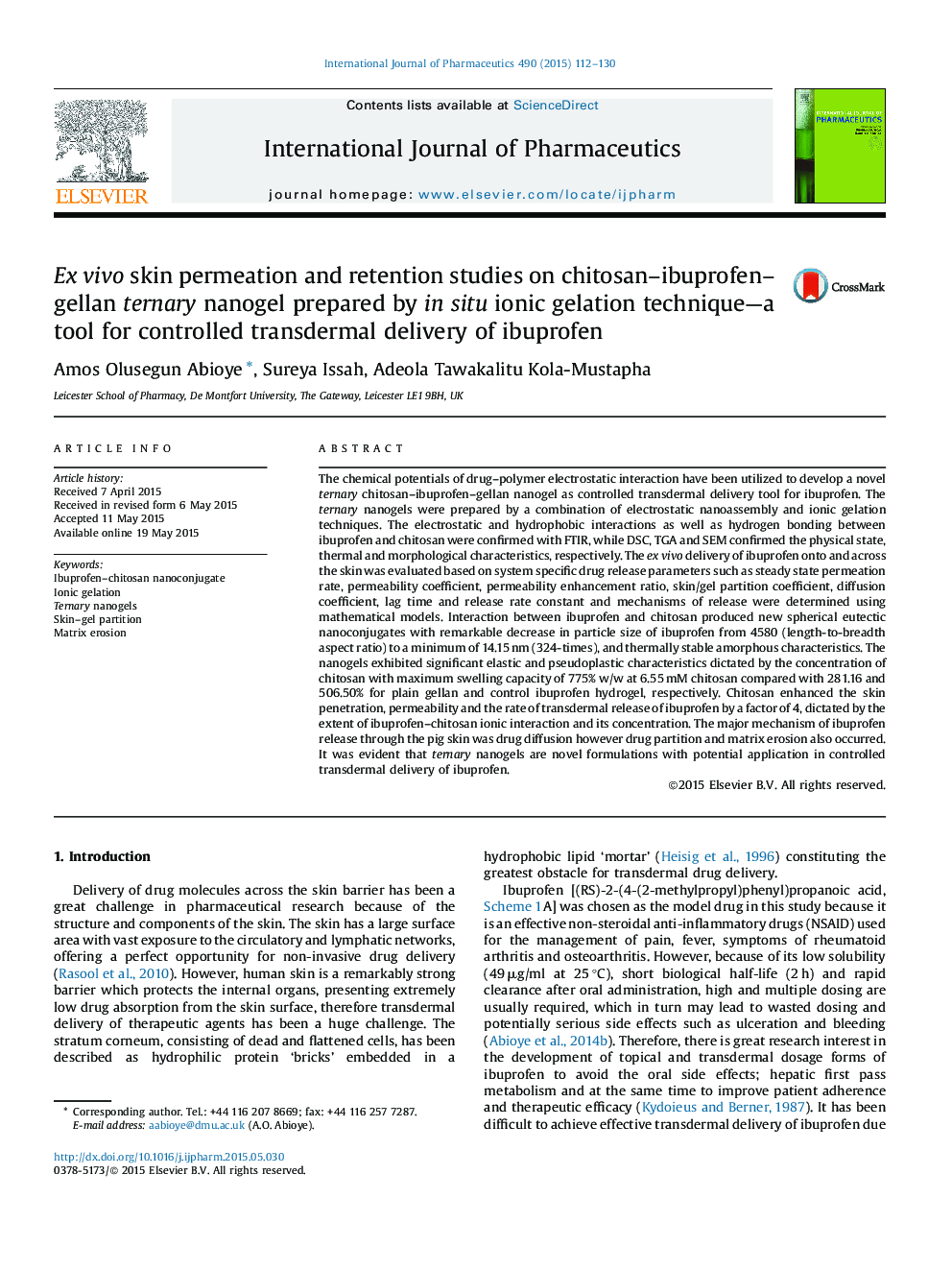| کد مقاله | کد نشریه | سال انتشار | مقاله انگلیسی | نسخه تمام متن |
|---|---|---|---|---|
| 2501302 | 1557334 | 2015 | 19 صفحه PDF | دانلود رایگان |

The chemical potentials of drug–polymer electrostatic interaction have been utilized to develop a novel ternary chitosan–ibuprofen–gellan nanogel as controlled transdermal delivery tool for ibuprofen. The ternary nanogels were prepared by a combination of electrostatic nanoassembly and ionic gelation techniques. The electrostatic and hydrophobic interactions as well as hydrogen bonding between ibuprofen and chitosan were confirmed with FTIR, while DSC, TGA and SEM confirmed the physical state, thermal and morphological characteristics, respectively. The ex vivo delivery of ibuprofen onto and across the skin was evaluated based on system specific drug release parameters such as steady state permeation rate, permeability coefficient, permeability enhancement ratio, skin/gel partition coefficient, diffusion coefficient, lag time and release rate constant and mechanisms of release were determined using mathematical models. Interaction between ibuprofen and chitosan produced new spherical eutectic nanoconjugates with remarkable decrease in particle size of ibuprofen from 4580 (length-to-breadth aspect ratio) to a minimum of 14.15 nm (324-times), and thermally stable amorphous characteristics. The nanogels exhibited significant elastic and pseudoplastic characteristics dictated by the concentration of chitosan with maximum swelling capacity of 775% w/w at 6.55 mM chitosan compared with 281.16 and 506.50% for plain gellan and control ibuprofen hydrogel, respectively. Chitosan enhanced the skin penetration, permeability and the rate of transdermal release of ibuprofen by a factor of 4, dictated by the extent of ibuprofen–chitosan ionic interaction and its concentration. The major mechanism of ibuprofen release through the pig skin was drug diffusion however drug partition and matrix erosion also occurred. It was evident that ternary nanogels are novel formulations with potential application in controlled transdermal delivery of ibuprofen.
Figure optionsDownload high-quality image (146 K)Download as PowerPoint slide
Journal: International Journal of Pharmaceutics - Volume 490, Issues 1–2, 25 July 2015, Pages 112–130